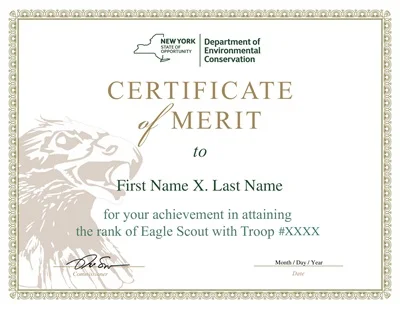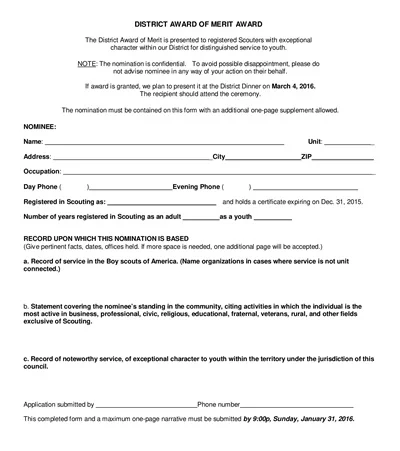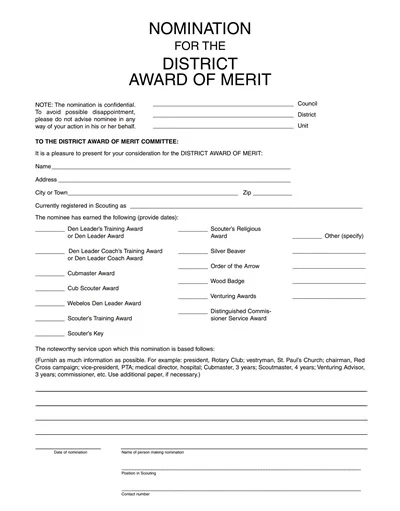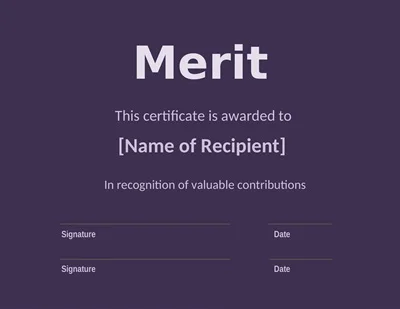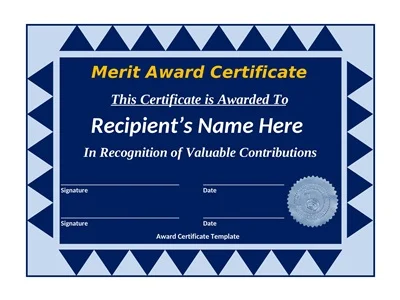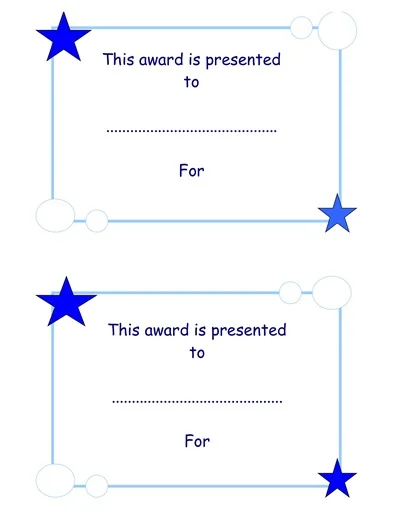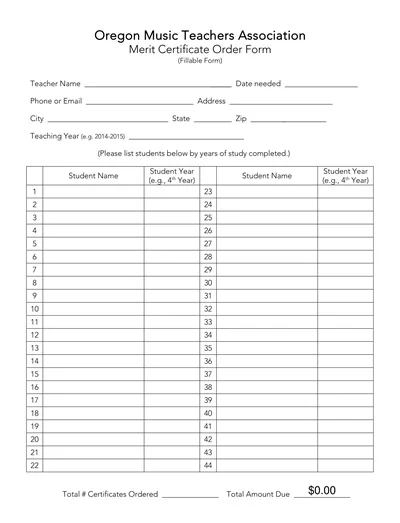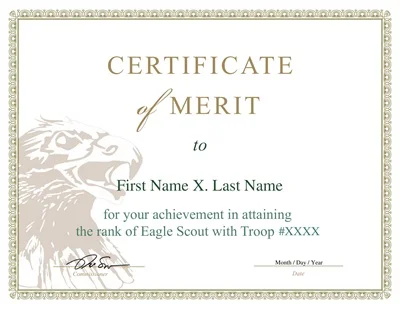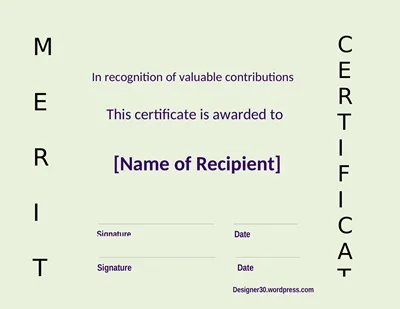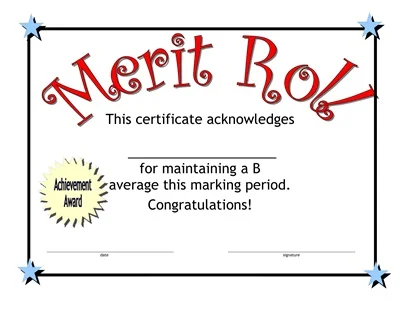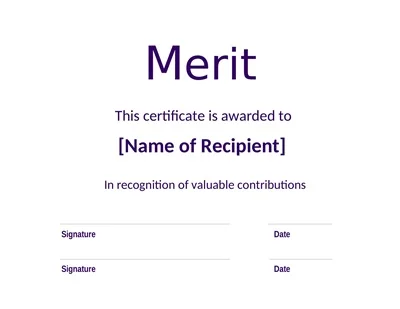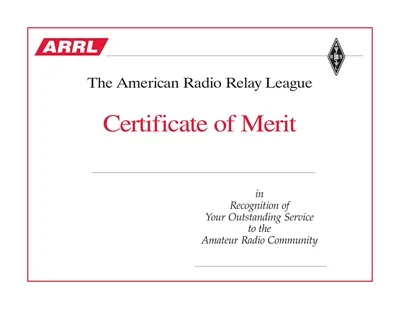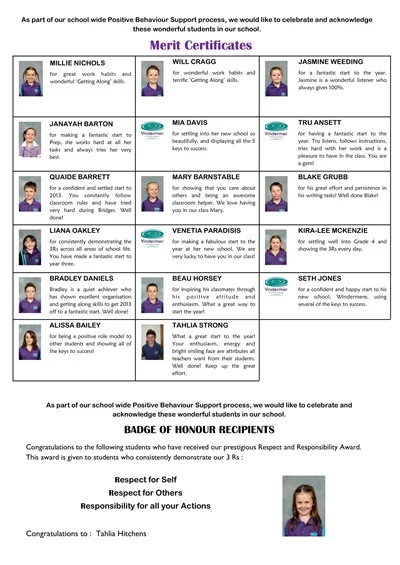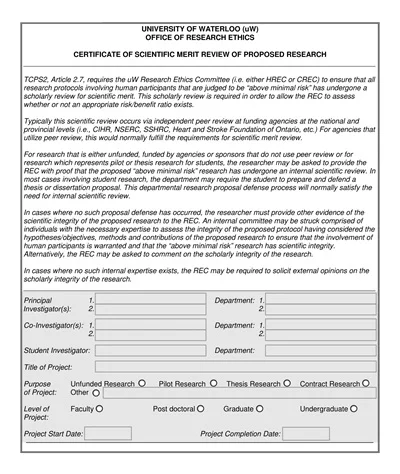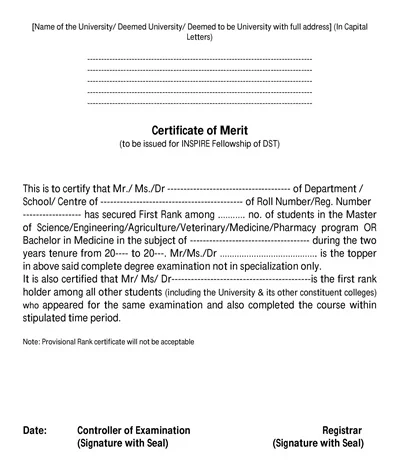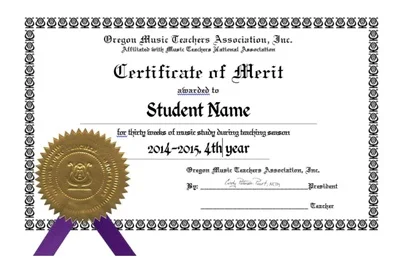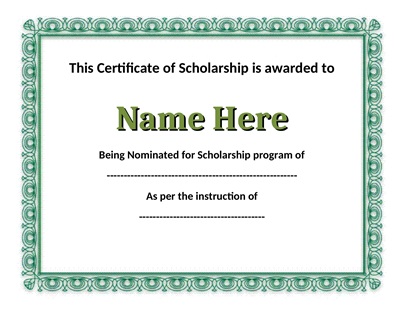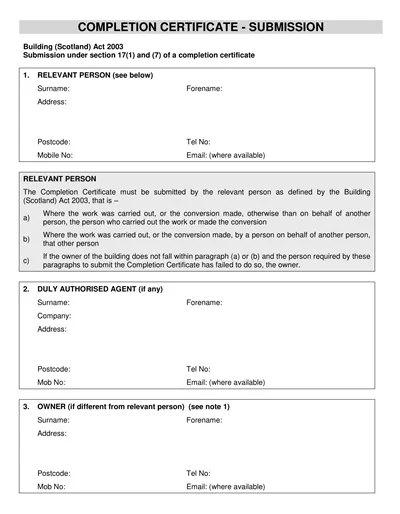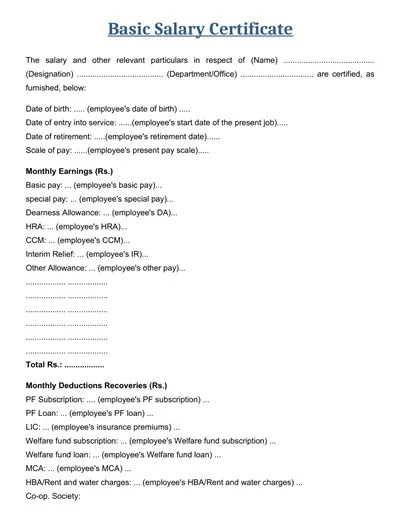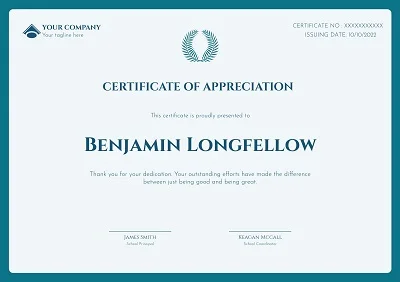A Merit Certificate Template is a document format created before serving the purpose of awarding an employee, student, or group for accomplishments or performance in different fields involving academic, extracurricular, recreational, or social activities.
In this template, fields are typically left blank that are relevant to the specific event, like the recipient’s name, issuing authority, details of the achievement, and any date of issue. It includes a neat-looking template that is often designed to fit or complement the branding needs of the occasion or the institution.
Download Free Merit Certificate Templates
What is a Merit Certificate?
A Merit Certificate is a certificate that is given to a person so that he/she may exhibit a document that he/she has reached some level of achievement or proficiency or has exhibited high performance in any field.
These can be academic, sports, arts, or professional achievement recognition certificates, which may be awarded by an educational institution or an organization in which an individual is employed. Merit certificates also act as a supplement to competency and work ethic documentation, encouraging not only the receiver to pursue higher results and efficiency but also the rest of the performers.
Types of Merit Certificates
These certificates are given to people for merit and are meant to reward individuals for their performance in various fields. They form part of the property of every individual, given that they recognize the efforts, talents, and dedication of those who have been awarded such certificates.
Below are some common types of merit certificates:
1. Academic Excellence
This type of certificate is given to learners who have performed well in their exams or throughout the course. It appreciates their efforts, commitment, and performances in their respective fields of learning.
2. Sports Achievements
Most athletes who perform well in sporting events are awarded this certificate as a trophy for agility, coordination, cooperation, and determination. Winning also depicts individualism in accomplishments and interoperability in team sports.
3. Artistic Accomplishments
This certificate is presented to people with inborn talents who have painted, sung, danced, acted, or done anything artistic. This has the effect of acknowledging their ingenuity, enthusiasm, and commitment to the arts.
4. Volunteer Service
According to the current policy, this certificate is given to those who volunteer in the community and other related services. It is considered an argument that recognizes their sacrifices, efforts, kindness, and contributions to one’s society.
5. Leadership Qualities
As a form of honor that awards the uplifting and encouraging talents who can lead and steer people towards a given objective, this certificate acknowledges their capacity to influence others in leadership.
Applications for Merit Certificates
Merit certificates play a vital role in both educational and professional settings, offering numerous applications:
- Recognition of Achievement: It is well known that they acknowledge success or performance in a particular sphere, which contributes to increasing the rating and attracting more effort.
- Motivational Tool: B1 merit certificates have a positive effect on encouraging recipients and the rest of the learners to work hard towards attaining high achievement.
- Enhancement of Resume: For working professionals and students, these certificates help enhance the presentations of their portfolios by enriching the job applications with concrete achievements and making the applicants stand out in competitive markets.
- Proof of Competency: These are real documents that affirm that a certain person possesses the necessary skills and competencies in accordance with a certain expertise or specialization.
- Incentive for Participation: Merit certificates are used in different workshops or courses, where formal appreciation increases people’s activity and motivation.
- Basis for Scholarships or Grants: Thus, in the academic context, merit certificates can be useful in processing scholarships or grants since they emphasize the recipient’s capability and accomplishments.
Benefits of Merit Certificates
This type of reward is perhaps the most important recognition in any academic pursuit or career progression. It confirms that one has invested time, energy, and effort into a given sector, area, or topic.
Here are some of the key benefits of earning merit certificates:
Motivation and Encouragement
In an organization, merit certificates serve as better positive reinforcement for people to continue their efforts in their respective fields. For this reason, society’s appreciation can foster the morale of athletes and compel them to work harder in their endeavors.
Recognition of Abilities and Accomplishments
Actual merit certificates are relevant for anyone as a document as they signify one’s skills, knowledge, and successes. They make one feel recognized and appreciated, traits that are increasingly significant as one has to try hard to stand out in a particular profession more often.
Incorporation of Resume and Career Hopping
Qualifications are important in attaining a resume, hence the need to incorporate merit certificates. The desire demonstrated in a specialized field makes a person outstanding to any employer or academic institution that may be interested in hiring an employee. This can result in effective advancement in career prospects and progression in the profession chosen.
Networking Opportunities
They commonly have added privileges, such as invitations to ceremonies or events where people can interact with fellow mutual personalities or professionals of a given field. This creates a pathway to formal and informal partnerships and possible roles such as mentor and mentee, as well as employment grants.
Personal Growth and Development
To use merit certificates, one must work hard, dedicate oneself, and constantly strive for better performance. This process ultimately results in growth and development within the particular discipline and in other aspects of life, resulting from acquiring important life skills such as time management, goal-setting, and perseverance.
Validation for Future Goals
An aspect of merit framing is merit certificates, as they act as a confirmation of one’s ability and may boost one’s motivation to push forward and achieve other goals. This way, they are assured that their efforts have been appreciated, and they should try harder to raise their benchmarks to even better levels.
Recognition Other than Promotion or Promotion
This is more so compared to grades or a title that may be given out in bulk and never explains the full potential of a particular person with precision than a merit certificate that lists out how a certain person comprehends specific skills and achievements well. It gives an idea of their skills and strengths and leaves the students with a positive feeling about them.
How to Earn a Merit Certificate
A merit certificate is awarded as a mark of honor by institutions to students who have overcome adversity or have performed exceptionally well in their area of specialization.
Here’s how to earn one:
- Understand the Criteria: It is very important to research and understand the specific conditions or standards that must be met in order to be awarded this merit certificate. These can include enrolling in college, participating in athletics and other organization activities, or volunteering.
- Set Goals: According to the criteria defined above, develop clear, realistic self-targets to set for yourself. The last component involves goal setting since direction is very important in planning to achieve the intended objectives.
- Work Hard and Stay Committed: Most of the time, to get the best results, you need to work harder, and this is true when striving for excellent results. They urge you to remain loyal to your resolutions and invest the time and energy needed.
- Seek Feedback: Of course, during the project’s completion, it is helpful to get critical comments from teachers, tutors, or people you would like to become like. This feedback may then be used for additional practice or tuning of skill or work.
- Participate Actively: This will involve engaging in the activities and events that the certificate requires you to participate in as a living certificate. Exhibit initiative and assume assignments that demonstrate your leadership and teamwork abilities.
- Document Your Achievements: It is important to compile a list of your accomplishments, favorable contributions, or any received awards that may meet the merit certificate requirements. The documentation is useful and essential when attempting to get the certificate or when one is applying for or defending certification.
- Apply or Nominate Yourself: Some policies require an application or nomination by an authorized official. Do not shy away from volunteering. When presenting your achievements, make it easy for you to relate them to the set criteria for the certificate.
Thus, by executing the above-mentioned four steps and ensuring determination to work more effectively and harder, one is more likely to obtain a merit certificate.
How to Create a Merit Certificate Template
It is not a difficult endeavor, and designing your merit certificate template can be very rewarding because it allows you to formally and personally reward achievements.
Here’s a step-by-step guide to help you design an impressive certificate:
1. Choose Your Design Tool
Choose the design tool you feel most familiar with. For convenience, the simplest tools may include MS Word, Google Docs, Canva, and similar platforms. These have been developed to provide facilitated structures that can be implemented easily and according to one’s details.
2. Select a Template
First, select a simple template appropriate for the light-hearted or serious nature of the award you are presenting. The design should have sufficient white space and a professional look. Text will take most of the space, with room for logos or images if necessary.
3. Customize the Template
- Header: Design the header using creative text like “Certificate of Merit” or “Award of Excellence” in a big and bold format.
- Recipient’s Name: This makes it extremely convenient to identify who the gift is intended for, and it is recommended that the recipient’s name is placed in a highly visible area. Perhaps changing the kind of font or color here would be more effective.
- Description: In the given templates, mention the nature of a given accomplishment for an award. This section should be accurate, and the provision for the award should be stated clearly and to the point.
- Date and Signature: Make sure there are open slots for the date on which the award was issued or granted, together with the signatures of the individual or individuals issuing the certificate.
4. Add Visual Elements
To make it even more attractive, ideas such as adding the logo of the organization that issues such certificates or other images connected with the organization’s activity are appropriate. It is important that these elements are positioned well but in a way that does not distract the readers from the content.
5. Select Right Ones for Fonts and Colors
On the cell, choose fonts and colors that depict the seriousness of the award. Use formal font types such as Times New Roman or Calibri, and use any dazzling color sparsely to highlight relevant information.
6. Proofread and Edit
Finally, ensure the typeface of the certificate is clear, free from typo/graphic errors, and has adequate spacing between the lines. The lack of mistakes makes the award significant and proves that the program is credible enough to win.
7. Print on Quality Paper
Print the certificate on high-quality paper to make them feel about getting it. It can be concluded that a thicker paper weight or a slightly rough textured paper can go along with creating a solution of elegance.

